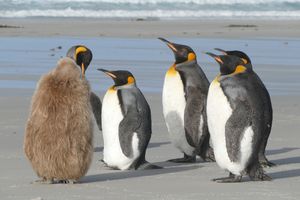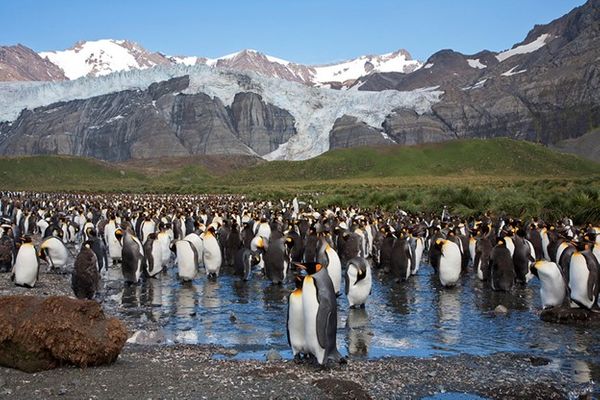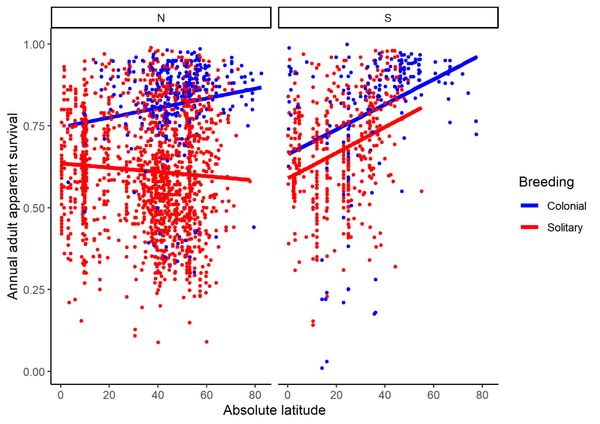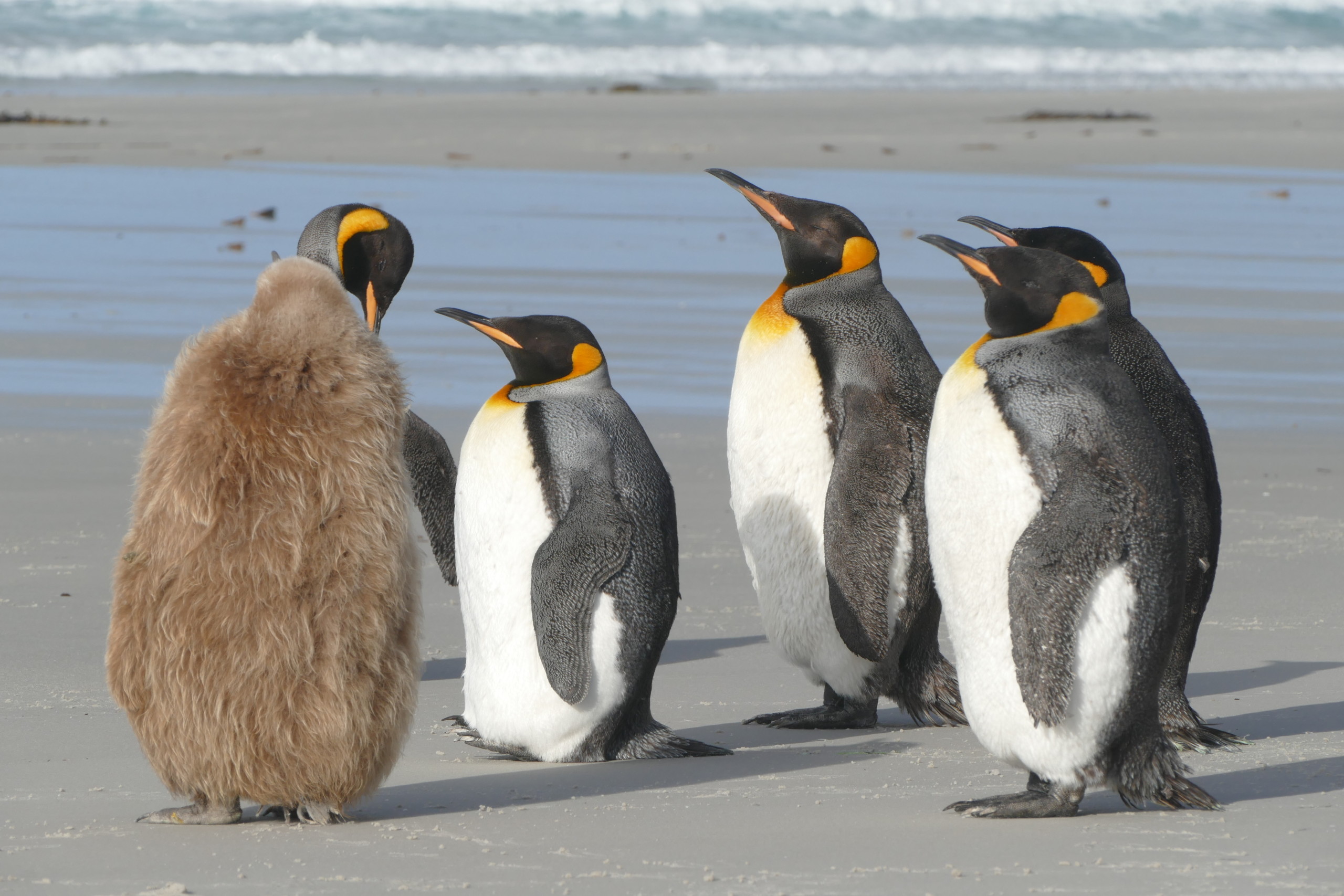 LINKED PAPER
LINKED PAPER
Colonial breeding birds show greater annual adult apparent survival globally. Beauchamp, G. 2022 Ibis. doi: 10.1111/ibi.13049 VIEW
When it comes to raising their families, most bird species prefer to be as far as possible from their neighbours. By contrast, parent birds in colonial species aggregate in large numbers in small breeding areas where they only defend their nests and rely on resources obtained away from the colony (Brown & Brown 2001). Seabirds such as penguins (Sphenisciformes) nesting in vast numbers on islands readily come to mind (Fig. 1). Colonies can vary widely in size ranging from a few pairs to several millions as in penguins and shearwaters (Reyes-Arriagada et al. 2007). Some colonies are so large that they can be detected using satellite imagery (Lynch et al. 2012). Perhaps as many as 30% of bird species breed colonially, but this is contentious as defining a colony is not always straightforward. Colonial breeding is particularly common in aquatic species, such as herons (Pelecaniformes) and seabirds (Procellariiformes, Pelecaniformes, Charadriiformes, Gaviiformes and Podicipediformes), but can be found in many land species as well.

Figure 1 King Penguins (Aptenodytes patagonicus) at a breeding colony on the island of South Georgia © Roderick Eime CC BY-ND 2.0..
Large aggregations of nesting birds can create problems for colonial species. Resources in areas close to colonies can become rapidly depleted by the sheer number of foragers. Parasites are also more readily transmitted when nests are clumped. But nesting in colonies can also be beneficial. Colonial breeding can help parent birds locate dispersed food resources and deter predators more effectively. As colonial breeding is common in many different unrelated types of birds, the thinking is that the advantages associated with this breeding system must often outweigh the negative consequences.
Investigating how colonial breeding can evolve is not an easy task as most colonial species never breed alone. A fruitful approach is to examine the impact of colonial breeding on attributes such as annual survival or reproductive success that integrate the various consequences of coloniality. If colonial breeding helps parent birds, then one or more of these attributes must be higher in colonial than in solitary breeding species. To test the idea, I gathered data on annual survival for many different species around the world to examine comprehensively whether colonial breeding rather than solitary breeding is associated with greater survival from year to year in parent birds. The dataset that I collected from the literature consisted of 2431 survival estimates from 1170 species including 213 colonial breeding species from 35 different families and 957 solitary breeding species belonging to 131 different families. To get an annual survival estimate, ornithologists mark many birds with leg rings during one period and aim to recapture, resight, or recover the same birds every year hence. Ongoing projects can last for decades and rely on the dedicated effort of many researchers (Abadi et al. 2017). The survival estimates that I collected involved at least four million ringed birds.
The results of the study showed that survival from year to year was greater in colonial than in solitary breeding species by close to 10 percentage points. This difference prevailed in the two hemispheres (Fig. 2) and persisted when excluding types of birds with unique traits that might bias the findings. While the difference in annual survival may appear small, it could translate into several additional years of breeding for the average species. In addition to surviving better, parent birds in colonies might be able to raise more offspring. Future work on offspring survival is needed with a similar set of solitary and colonial breeding species to investigate the idea further.

Figure 2 Annual adult apparent survival (expressed as a probability from 0 to 1) in colonial and solitary breeding species of birds as a function of absolute latitude in the northern (N) and southern (S) hemispheres.
Living in groups is often thought to increase survival and reproduction in animals. My study showed that with respect to survival this is the case for colonial breeding birds. Whether this is the case for colonial breeding in other taxa like mammals or spiders or for other types of groups remains an open question whose answer will shed light on the evolution of colonial breeding in animals as well as sociality in general.
References
Abadi, F., Barbraud, C. & Gimenez, O. 2017. Integrated population modeling reveals the impact of climate on the survival of juvenile emperor penguins. Global Change Biology 23: 1353-1359. VIEW
Brown, C.R. & Brown, M.B. 2001. Avian coloniality. In Current Ornithology (eds. Nolan, V. & Thompson, C.F). Boston, MA:Springer US 157: 230-238. VIEW
Lynch, H.J., White, R.P., Black, A.D. & Naveen, R. 2012. Detection, differentiation, and abundance estimation of penguin species by high-resolution satellite imagery. Polar Biology 35: 963-968. VIEW
Reyes-Arriagada, R., Campos-Ellwanger, P., Schlatter, R.P. & Baudini, C. 2007. Sooty Shearwater (Puffinus griseus) on Guafo Island: the largest seabird colony in the world? Biodiversity and Conservation 16: 913-930. VIEW
Image credit
Top right: King Penguins © GRID-Arendal CC BY-NC-SA 2.0 Flickr.
If you want to write about your research in #theBOUblog, then please see here.




